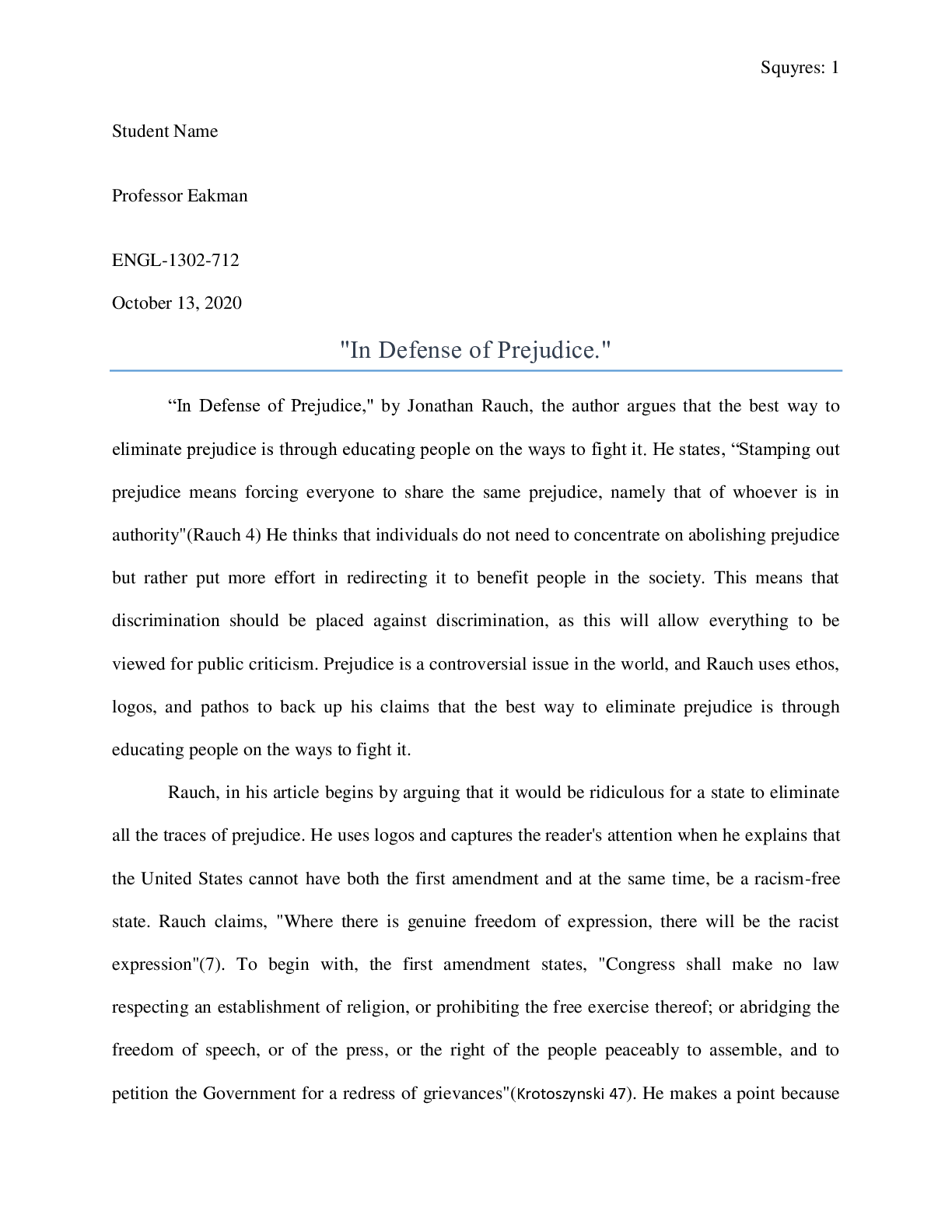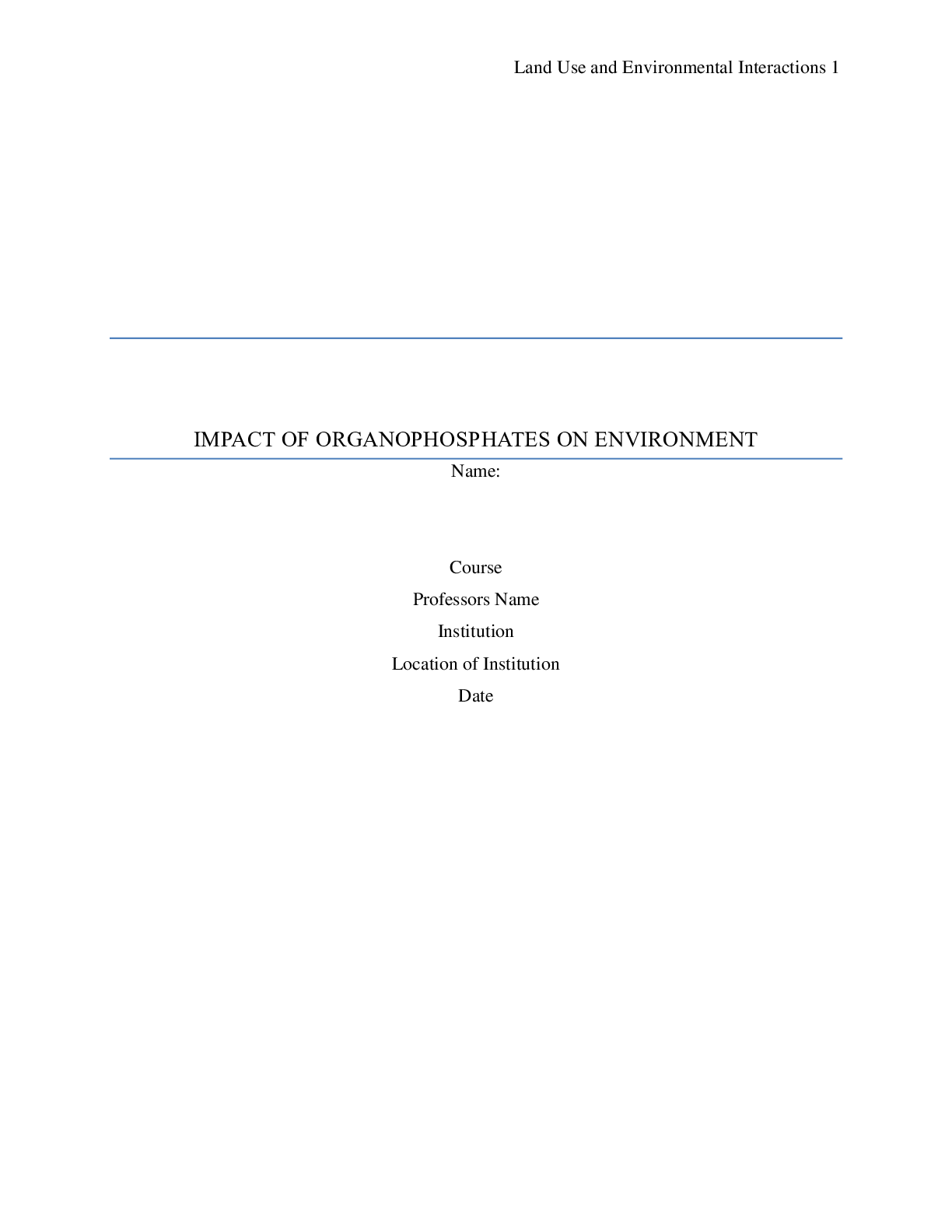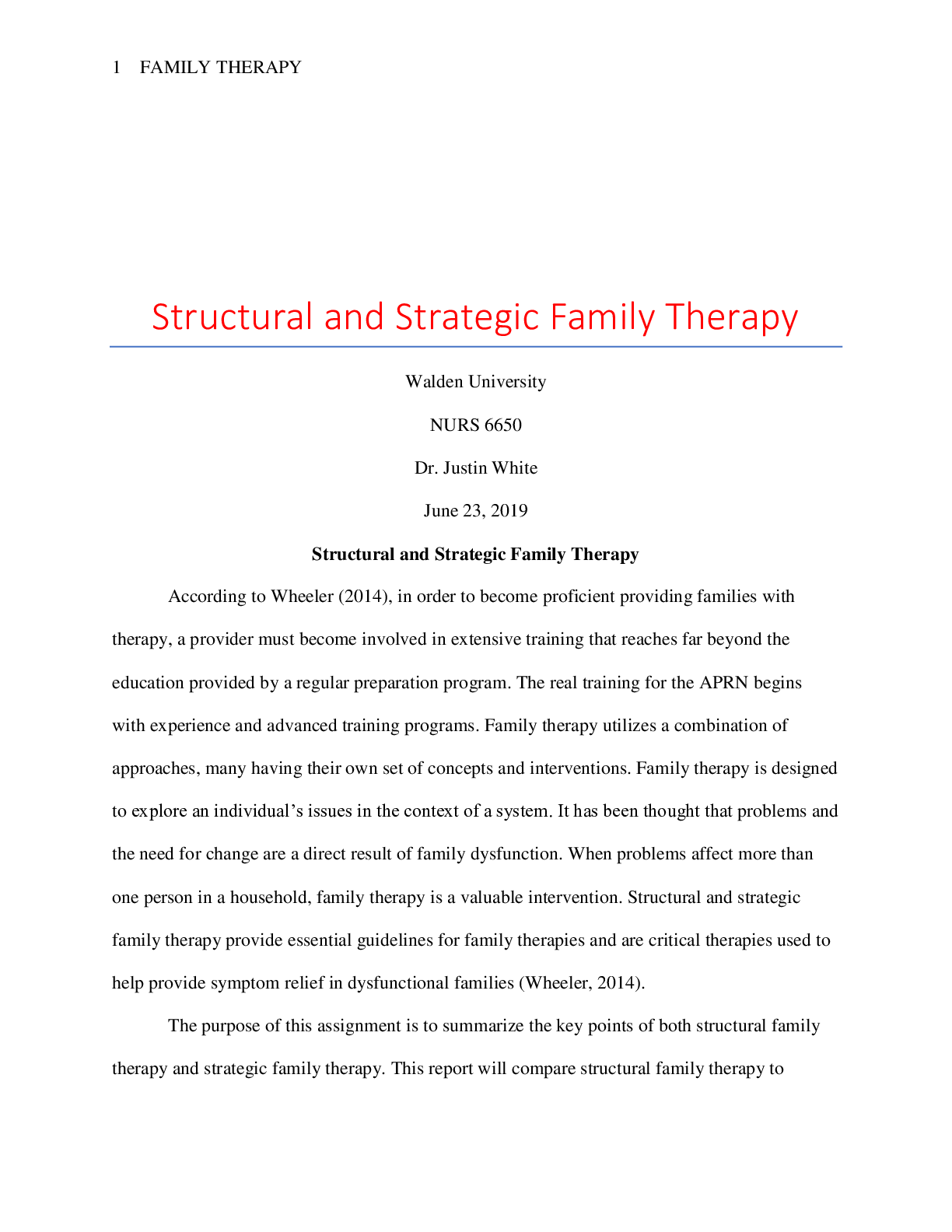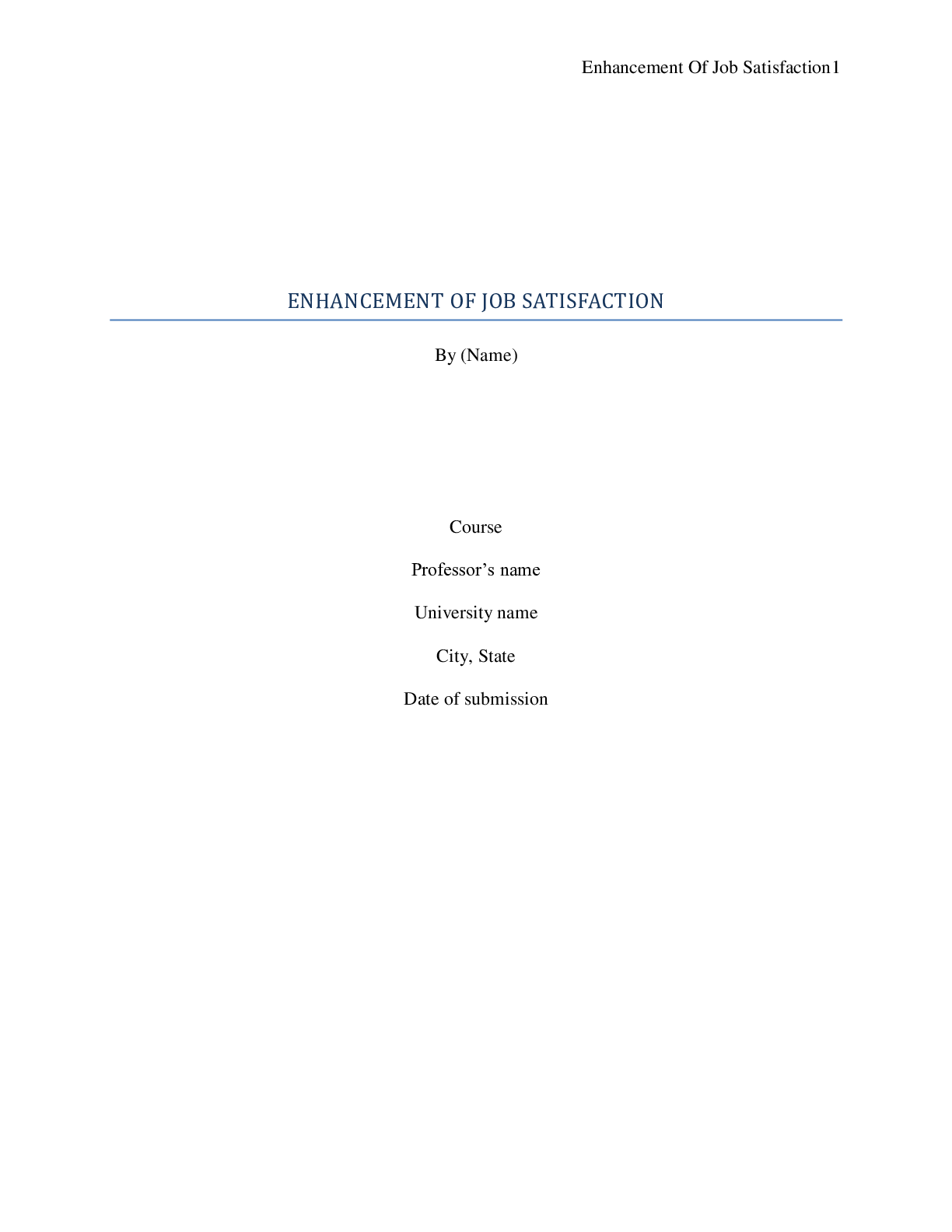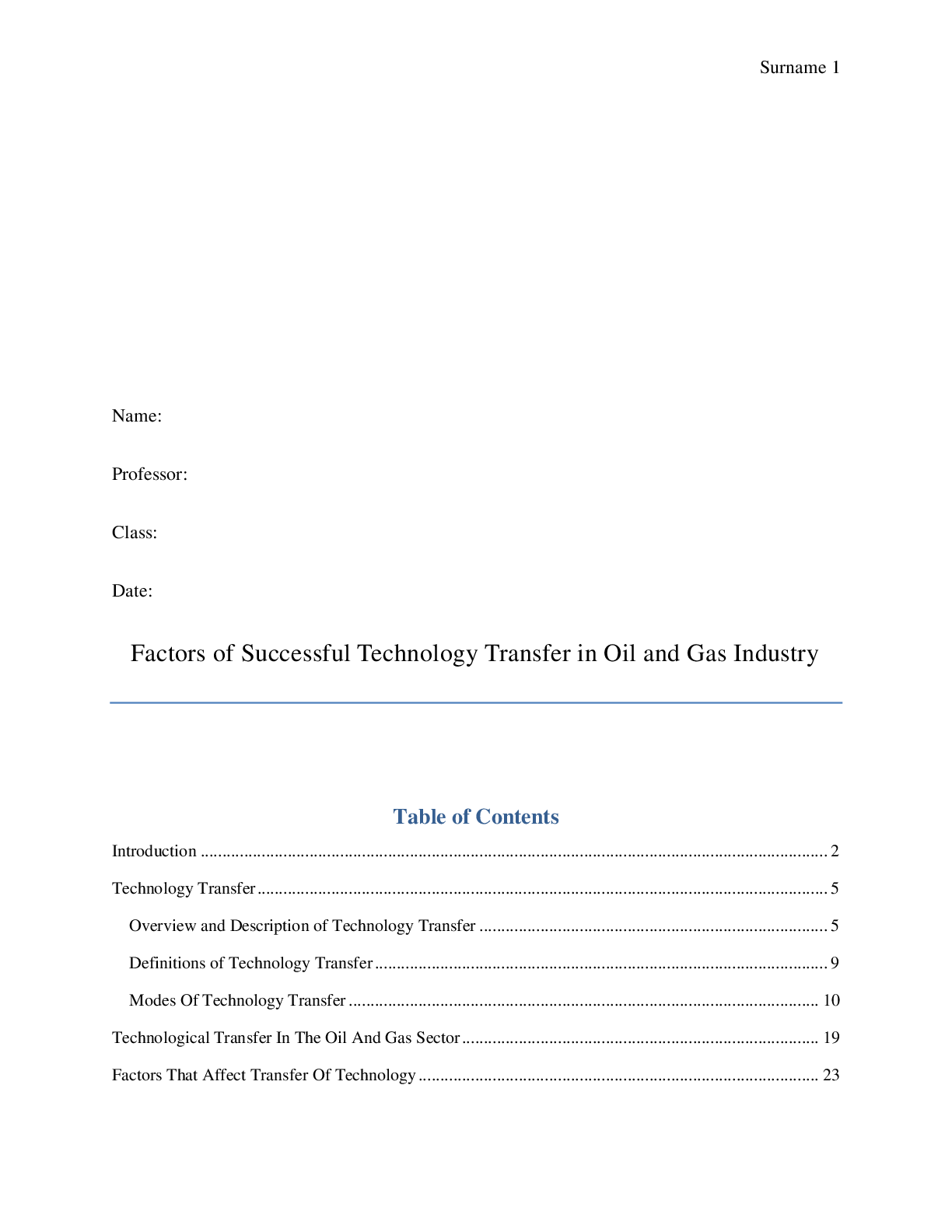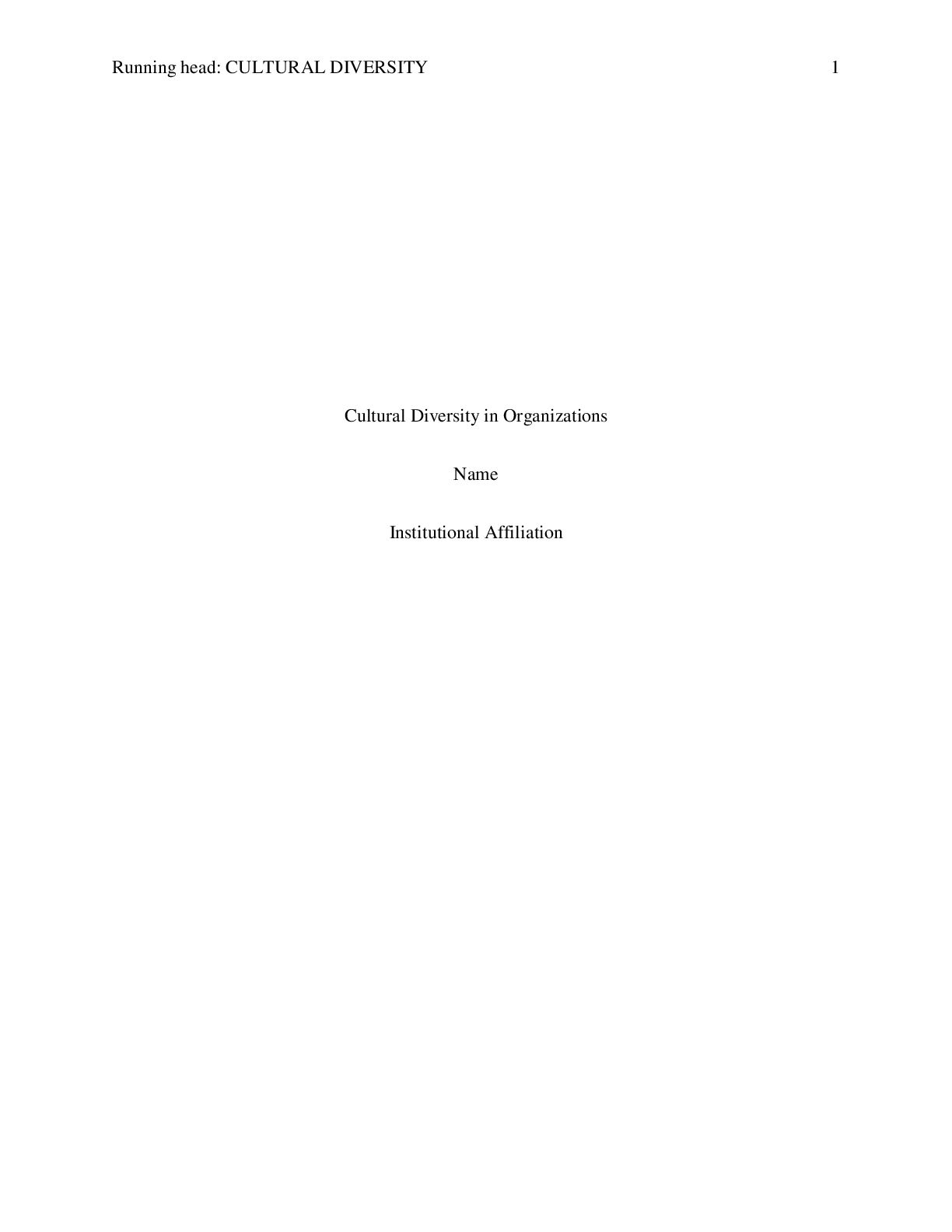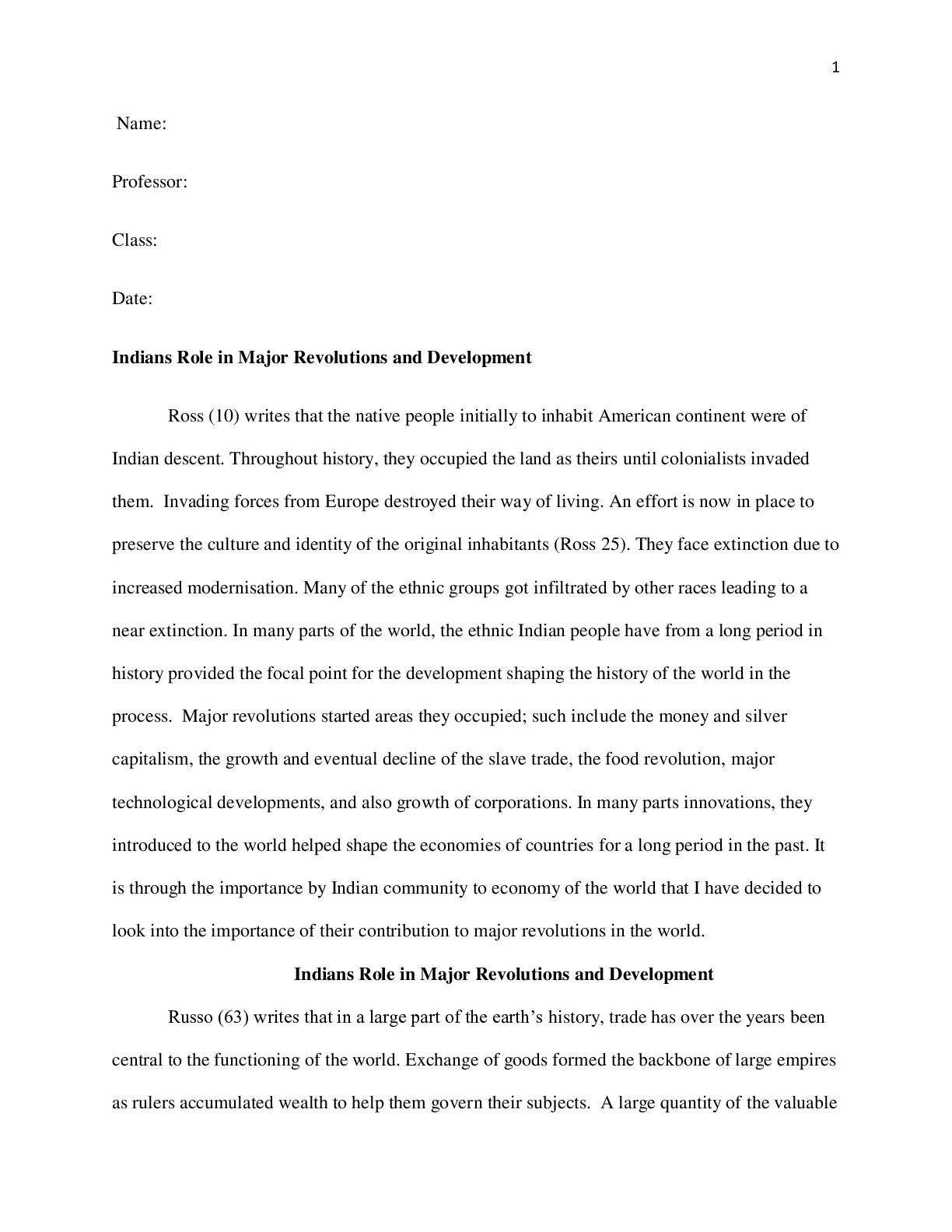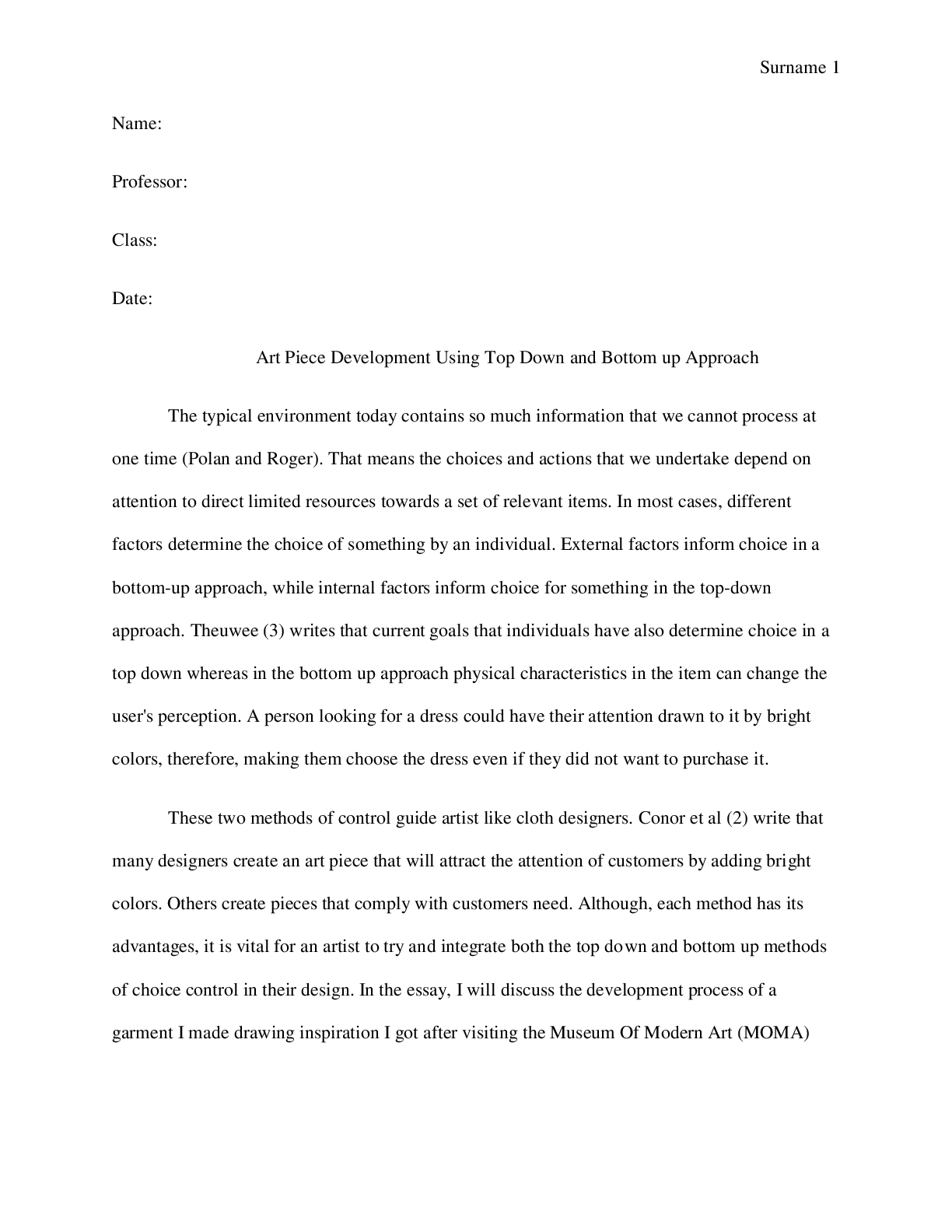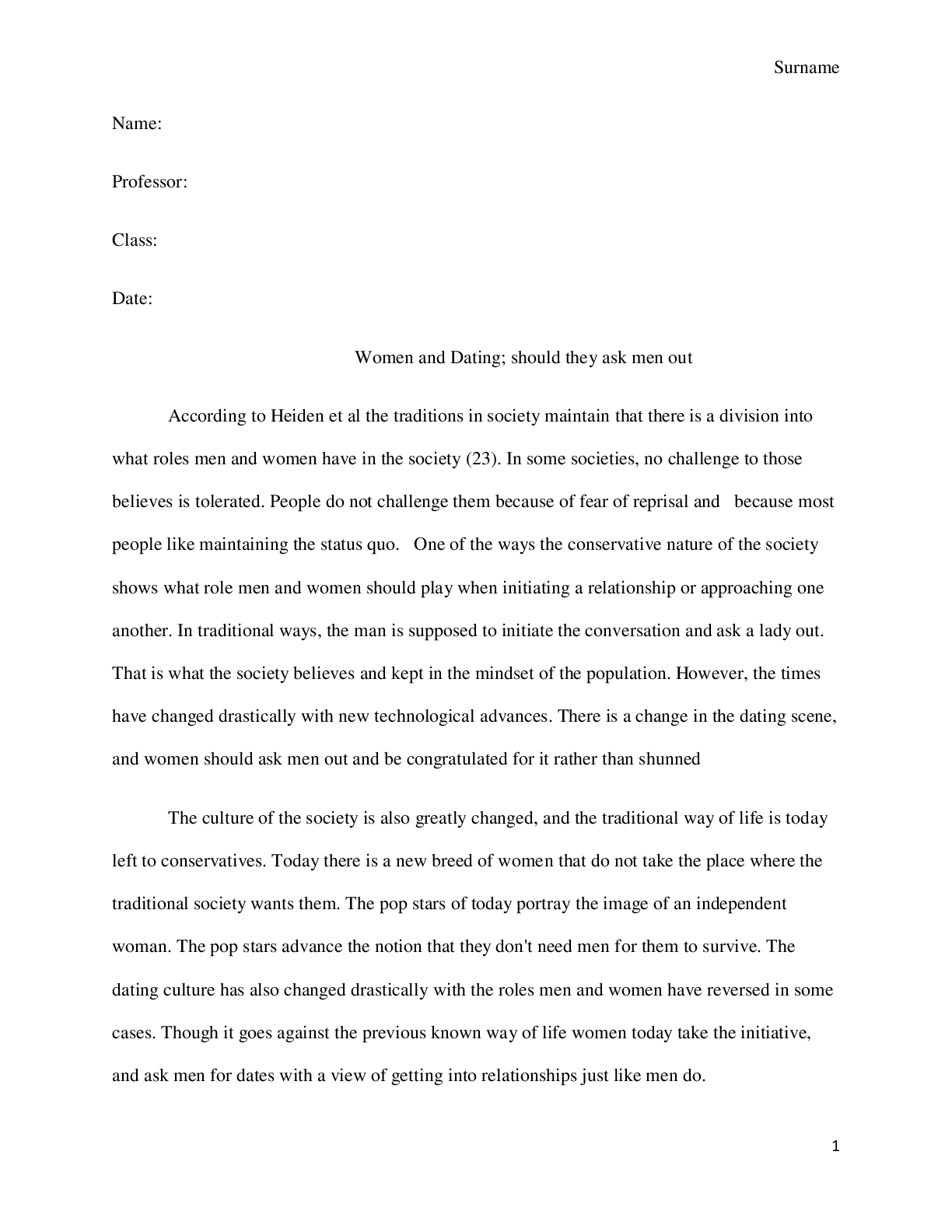*NURSING > ESSAY > Western Governors University - NURSING MS C1593C-159 Policy, Politics, and Global Health Trends- Tas (All)
Western Governors University - NURSING MS C1593C-159 Policy, Politics, and Global Health Trends- Task 1.
Document Content and Description Below
A1. Public Policy Issue The public policy issue that I have chosen to discuss is workplace violence in the nursing profession. Workplace violence is very prevalent in the healthcare setting, because... medical staff are attempting to do more with less; increasing patient populations, many specialty facilities are being shut down or merged, nursing staff shortages, and many patients do not have insurance. All of this can contribute to longer wait times, creating increased tension and heightened emotional state, which could be a precursor to violence. According to the American Nurses Association, in the healthcare industry, there are two types of workplace violence that are most prevalent: (1) Type II, which involves the patient, where the “individual has a relationship with the business and becomes violent while receiving services”, and (2) Type III, which involves violence among staff members, where “employees attack or threaten one another” (2017). Workplace violence is more prevalent in the nursing profession that you may believe. In 2013, a cross-sectional study was performed over a 12-month period, which included 970 nurses from 47 different nursing units. The study showed that 63.8% of nursing staff stated that they suffered from verbal abuse, 41.6% of these staff had suffered from threats of violence, 22.3% had suffered physical violence, 19.7% had been sexually harassed, and 9.7% had experienced bullying in the workplace (Mihyun, Sung-Hyun, & Hyun-Ja, 2014). There is currently no state standards or regulations put into place, in Texas, to prevent violence in the workplace. Every day, nursing staff are vulnerable to violence in the workplace. Many times, this behavior is overlooked due to not “having a witness” or “lack of bodily harm” (Taylor, 2010). Violence has no place in the healthcare workplace. Nurse’s should not have to accept fear as part of their job. Zero tolerance for workplace violence should be mandated in healthcare facilities in the state of Texas, allowing the clinicians to be able to provide the highest quality care in a safe work environment, which fosters healing. A1a. Issue Selection A1b. Issue Relevance A1c. Financial Impact A2. Personal Values A2a. Ethical Principal or Theory B1. Decision Maker B1a. Explanation B2. Challenges B3. Options/Interventions B4. Course of Action B5. Success of Policy Brief C1. Identified Organization or Community C1a. Summary of Expressed Interest C2. CBPR Principles C2a. Approach and Collaboration C2b. Goal Alignment C2c. Action Steps C2d. Roles/Responsibilities C2e. Key Elements of Evaluation Plan C2f. Community/Organization Plan D1. Strengths of Each Approach D2. Challenges of Each Approach D3. Most Effective Approach References Alzheimer Europe. (2010). Justice: the four common bioethical principles. Retrieved from http://www.alzheimer-europe.org/Ethics/Definitions-and-approaches/The-four-common- bioethical-principles/Justice American Nurses Association. (2017). Workplace Violence. Retrieved from http://www.nursingworld.org/MainMenuCategories/Policy-Advocacy/State/Legislative- Agenda-Reports/State-WorkplaceViolence Arnets, J, Hamblin, L, & Ager, J., Luborksy, M., Upfal, M.J., Russell, J., & Essenmacher, L. (2015). Underreporting of Workplace Violence Comparison of Self-Report and Actual Documentation of Hospital Incidents. American Association of Occupational Health Nurses, 63(5), 200-210. Bureau of Labor Statistics. (2015). Occupational Traumatic Injuries Among Workers in Heath Care Facilities- United States, 2012-2014. Morbidity and Mortality Weekly Report, 64(15), 405-410. Centers for Disease Control and Prevention. (2002). Violence occupational hazards in hospitals. Retrieved from https://www.cdc.gov/niosh/docs/2002-101/ Docksai, R. (2018). Lawmakers and hospitals take action to curb violence against nurses. Retrieved from https://www.nursinglicensure.org/articles/workplace-violence.html Harlan, E. (2017). Strategies for Creating and Implementing a Zero-Tolerance Workplace Violence Policy. Lexis Practice Advisor Journal. Retrieved from https://www.lexisnexis.com/lexis-practice-advisor/the-journal/b/lpa/archive/2017/12/19/strategies-for-creating-and-implementing-a-zero-tolerance-workplace-violence-policy.aspx Institute for Creation research. (2018). Ethics and justice. Retrieved from http://www.icr.org/christian-ethics/ Maryland, M. & Gonzalez, R. (2012). Patient Advocacy in the Community and Legislative Arena. Online Journal of Issues in Nursing, 17(1). Mihyun, P., Sung-Hyun, C., & Hyun-Ja, H. (2014). Prevalence and Perpetuators of Workplace Violence by Nursing Unit and the Relationship Between Violence and the Perceived Work Environment. Journal of Nursing Scholarship, 47(1), 87-95. National Institute for Occupational Safety and Health. (2016). Workplace violence prevention for nurses. Retrieved from https://wwwn.cdc.gov/wpvhc/Course.aspx/Slide/Unit1_8 Nixon, W. (2004). The financial impact of workplace violence. The National Institute for the Prevention of Workplace Violence, Inc. Retrieved from http://www.workplaceviolence 911/node/997 North Texas VA Health Care System. (2018). Just culture training: creating a culture of accountability. [PowerPoint Slides]. Retrieved from https://vaww.visn17.portal.va.gov/NTX/services/qsv/SitePages/Just%20Culture.aspx Occupational Safety and Health Administration. (2015). Preventing workplace violence: a road map for healthcare facilities. Retrieved from: https://www.osha.gov/Publications/OSHA3827.pdf Occupational Safety and Health Administration. (2015). Workplace violence risk factors. Retrieved from https://www.osha.gov/Publications/OSHA3826.pdf Ore, T. (2002). Workplace assault management training: an outcome evaluation. Journal of Healthcare Protection Management, Summer 18(2), 61-93. Pepa, A., & Venella, J. (2013). Workplace Violence in Healthcare. The Online Journal of Issues in Nursing, 18(1). Phillips, J. (2013). Workplace Violence against Health Care Workers in the United States. The New England Journal of Medicine. Retrieved from http://www.nejm.org/doi/full/10.1056/NEJMra1501998?rss=searchAndBrowse& Pupillo, J. (2014). Study Outlines Strategies to Boost Staff Buy-in During PCMH Transformation. American Academy of Family Physicians. Retrieved from https://www.aafp.org/news/practice-professional-issues/20140129pcmhbuy-in.html Sathymoorthy, G. (2012). How a ‘bottom-up’ approach to innovation is making service improvements easier. Health Service Journal. Retrieved from https://www.hsj.co.uk/resource-centre/best-practice/qipp-resources/how-a-bottom-up- approach-to-innovation-is-making-service-improvements-easier/5040805.article Taylor, J. L. (2010). Workplace Violence. The American Journal of Nursing, 110(3), 11. Texas House of Representatives. (2018). How a bill becomes a law. Retrieved from http://www.house.state.tx.us/about-us/bill/ The Joint Commission. (2016). Bullying has no place in healthcare. Quick Safety, 24. Retrieved from https://www.jointcommission.org/assets/1/23/Quick_Safety_Issue_24_June_2016.pdf United States Department of Labor. (2015). Preventing workplace violence: a road map for healthcare facilities. Retrieved from https://www.osha.gov/Publications/OSHA3827.pdf U.S. Department of Veterans Affairs. (2018). Mission, vision, core values & goals. Retrieved from https://www.va.gov/about_va/mission.asp U.S. Department of Veterans Affairs. (2018). Public health: workplace violence prevention in healthcare facilities- occupational health. Retrieved from: https://www.publichealth.va.gov/employeehealth/threat_management/index.asp Wurim Ben, P. (2013). Workplace Violence and the Cost-Benefit Trade off of Zero-Tolerance Safety Policies in Central Nigerian Hospitals. International Journal of Applied Psychology, 3(4), 114-119. Yang, L. (2012). Community-Based Participatory Research: A Strategy for Building Healthy Communities and Promoting Health through Policy Change. The University of California, Berkeley School of Public Health. Retrieved from http://www.policylink.org/sites/default/files/CBPR.pdf [Show More]
Last updated: 1 year ago
Preview 1 out of 33 pages
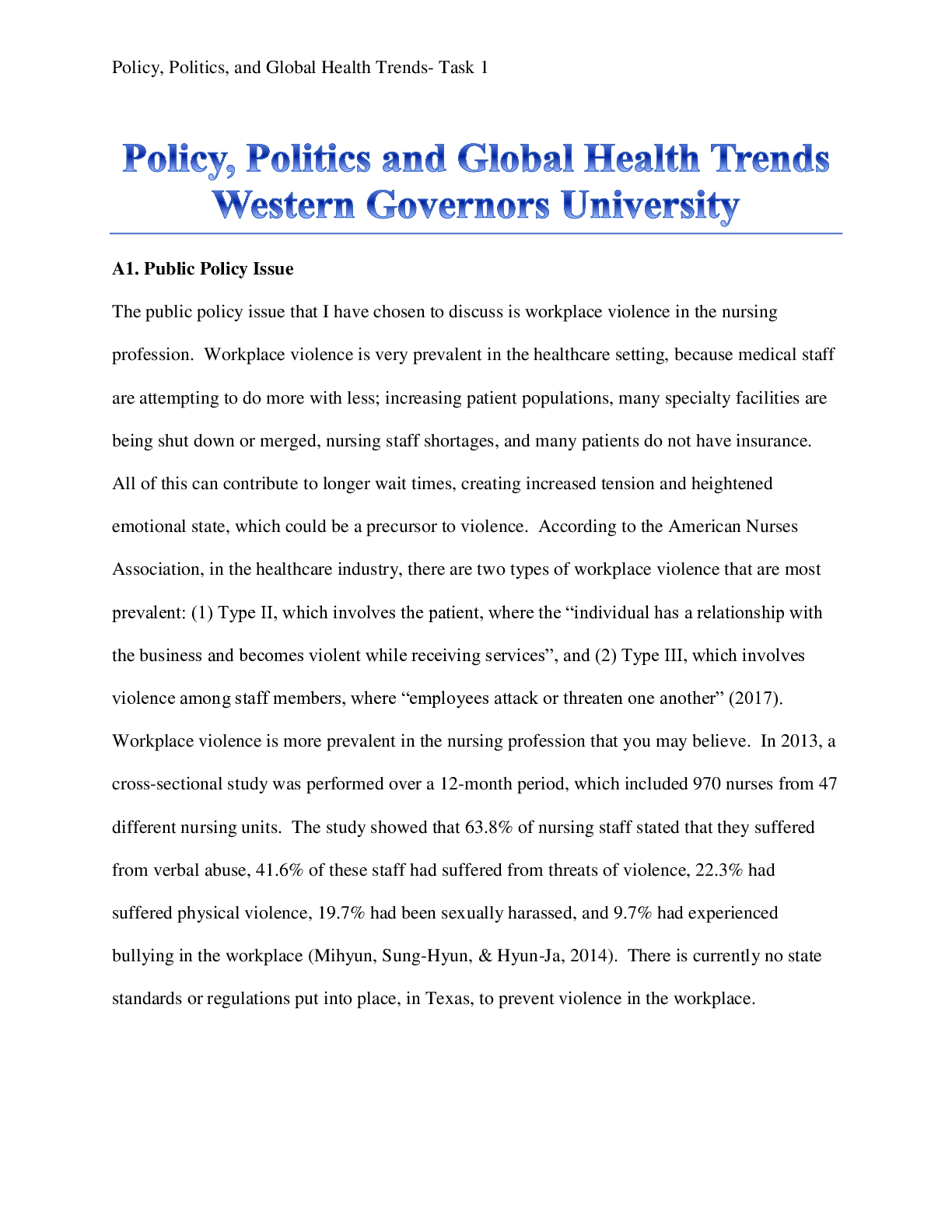
Reviews( 0 )
Document information
Connected school, study & course
About the document
Uploaded On
Jun 08, 2020
Number of pages
33
Written in
Additional information
This document has been written for:
Uploaded
Jun 08, 2020
Downloads
0
Views
82

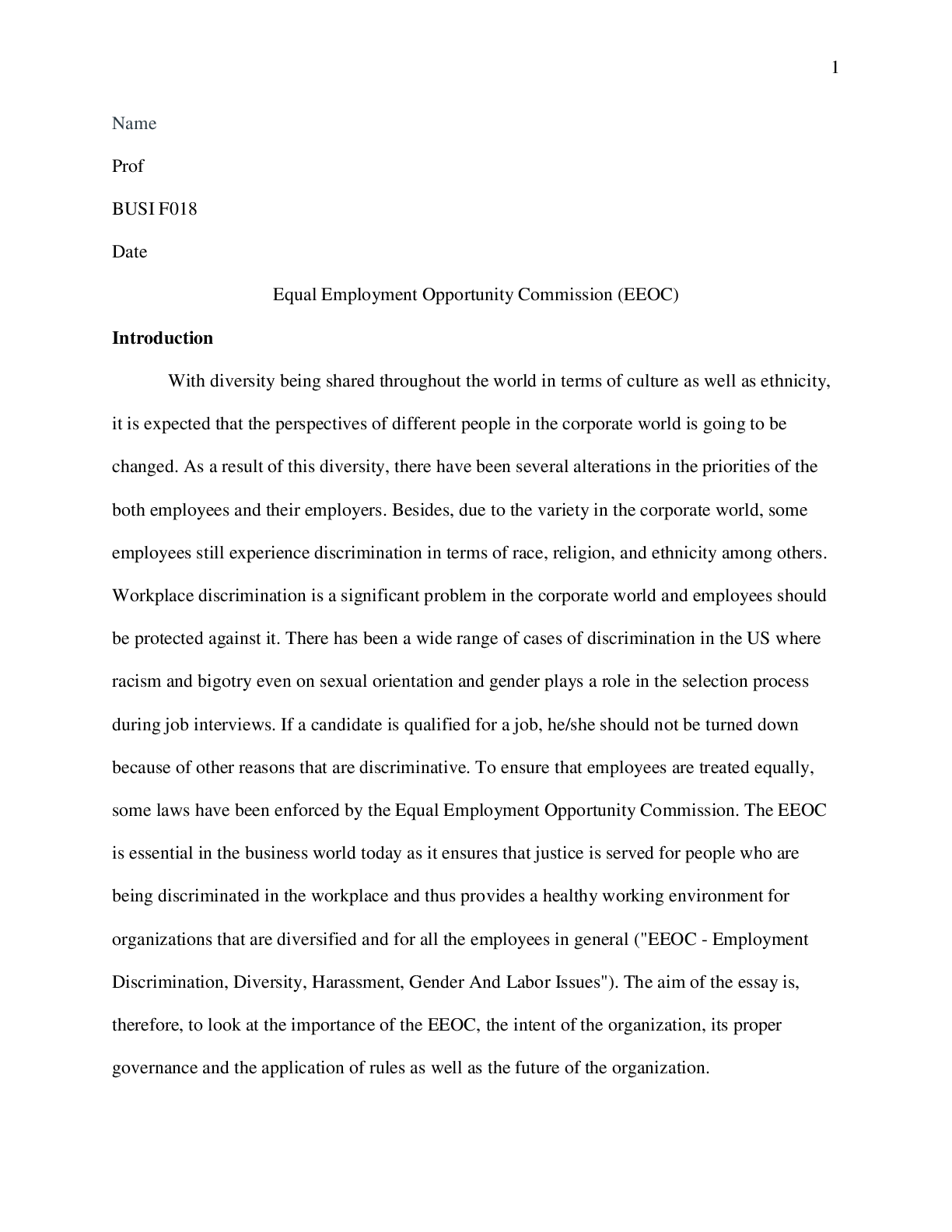

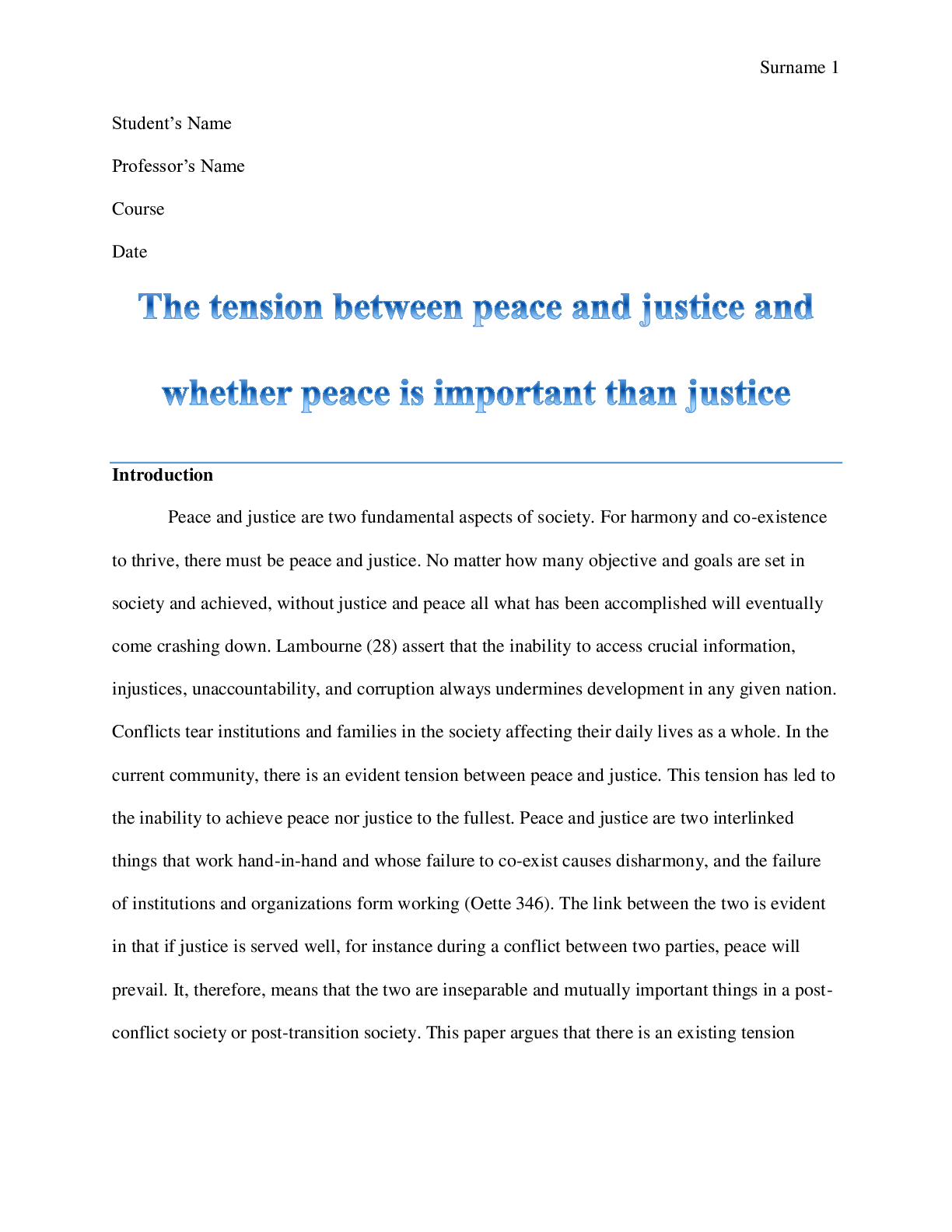

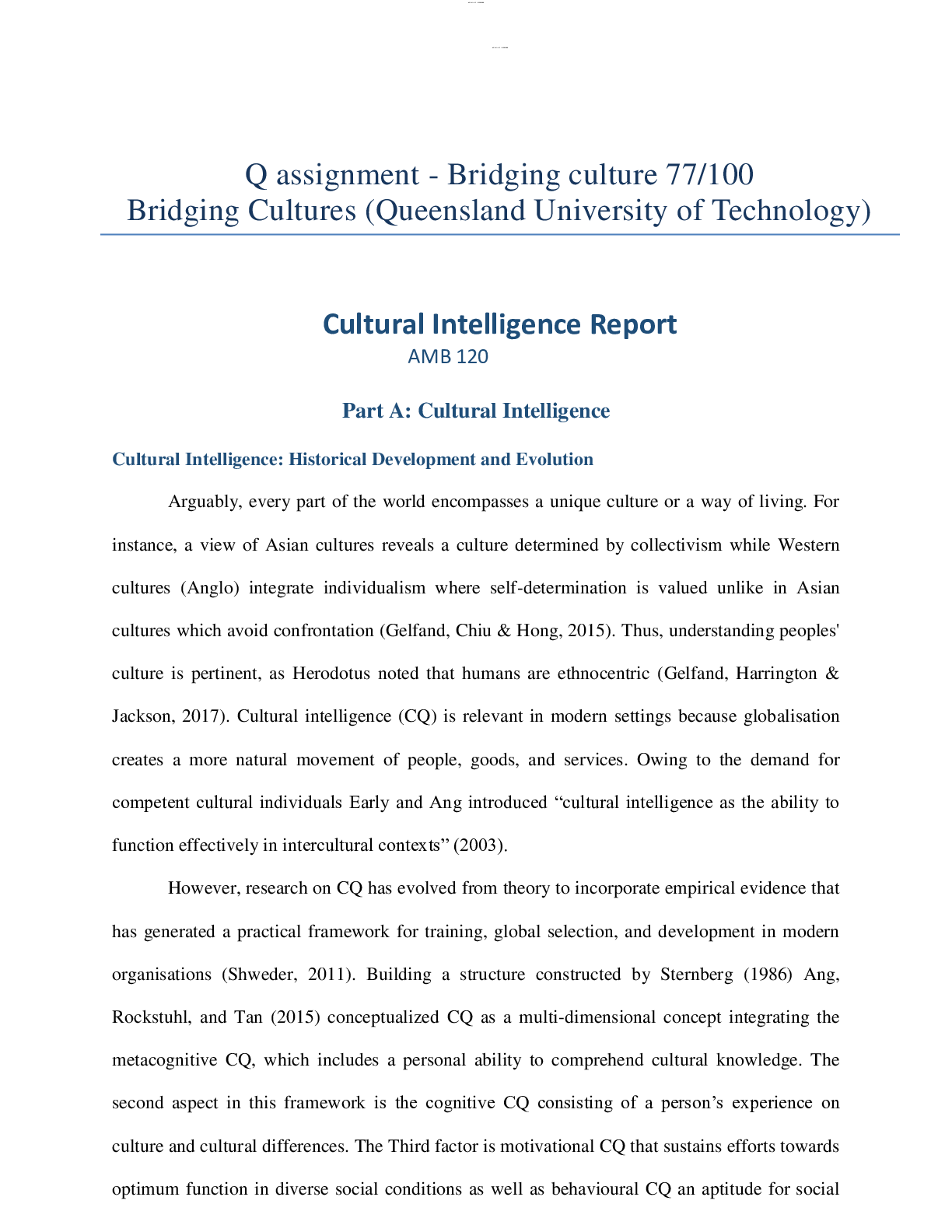
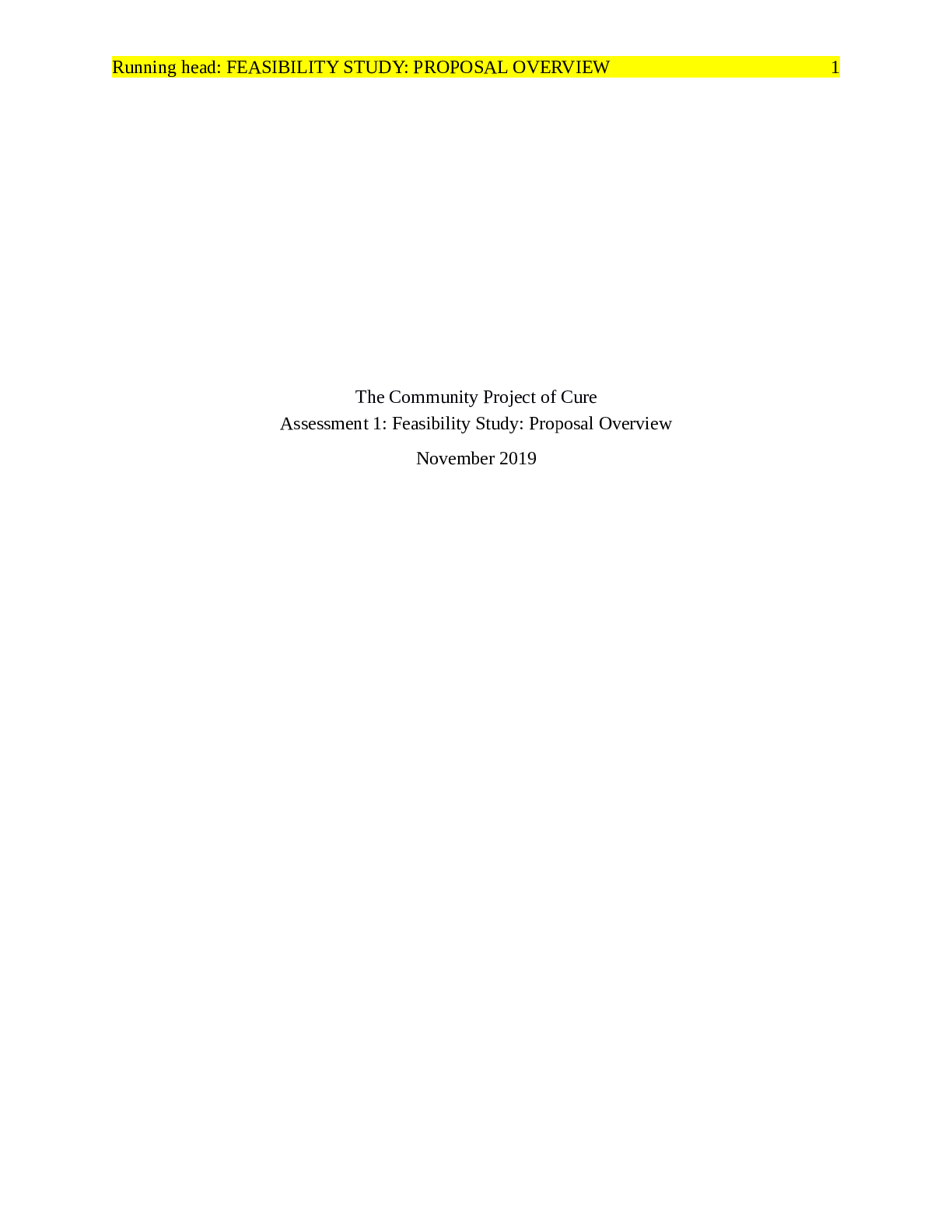



.png)
